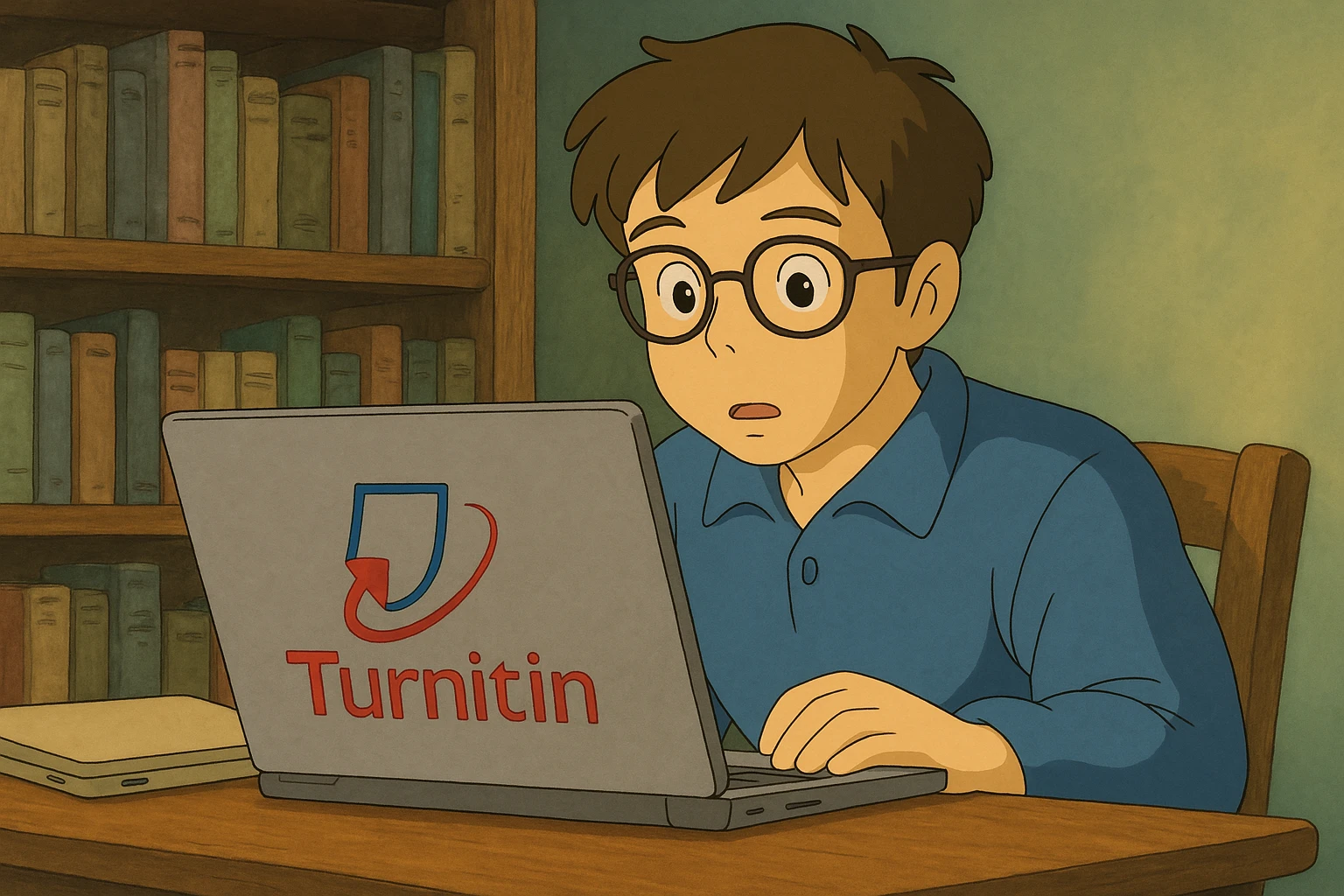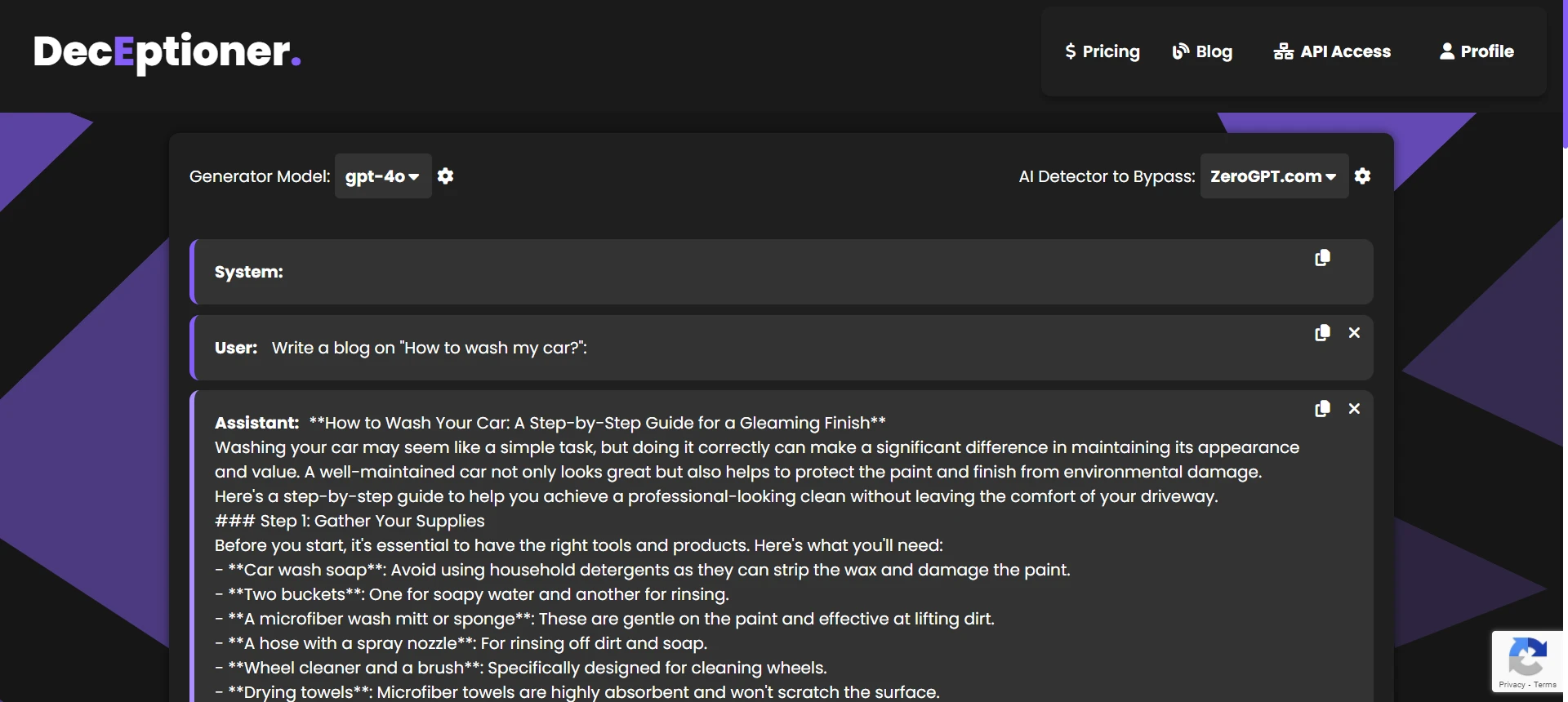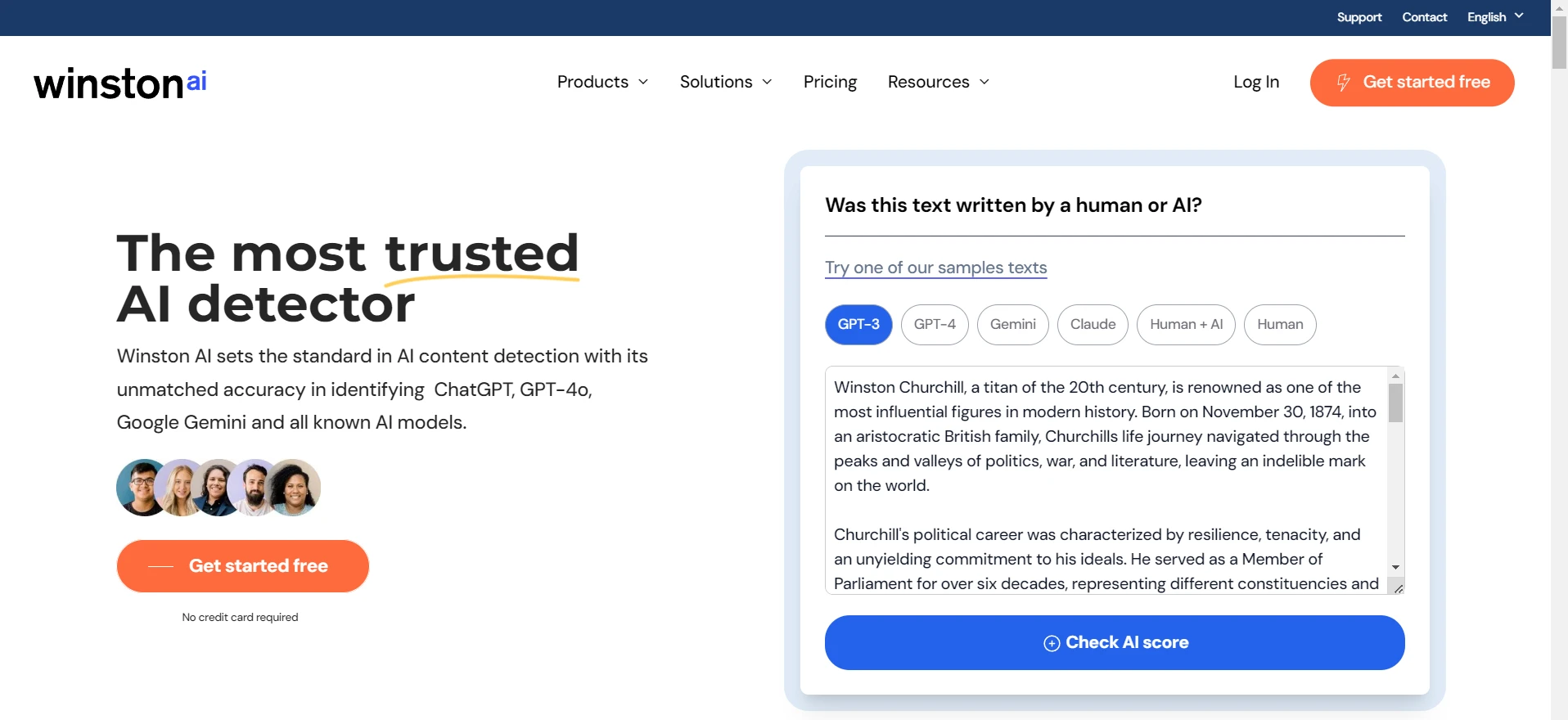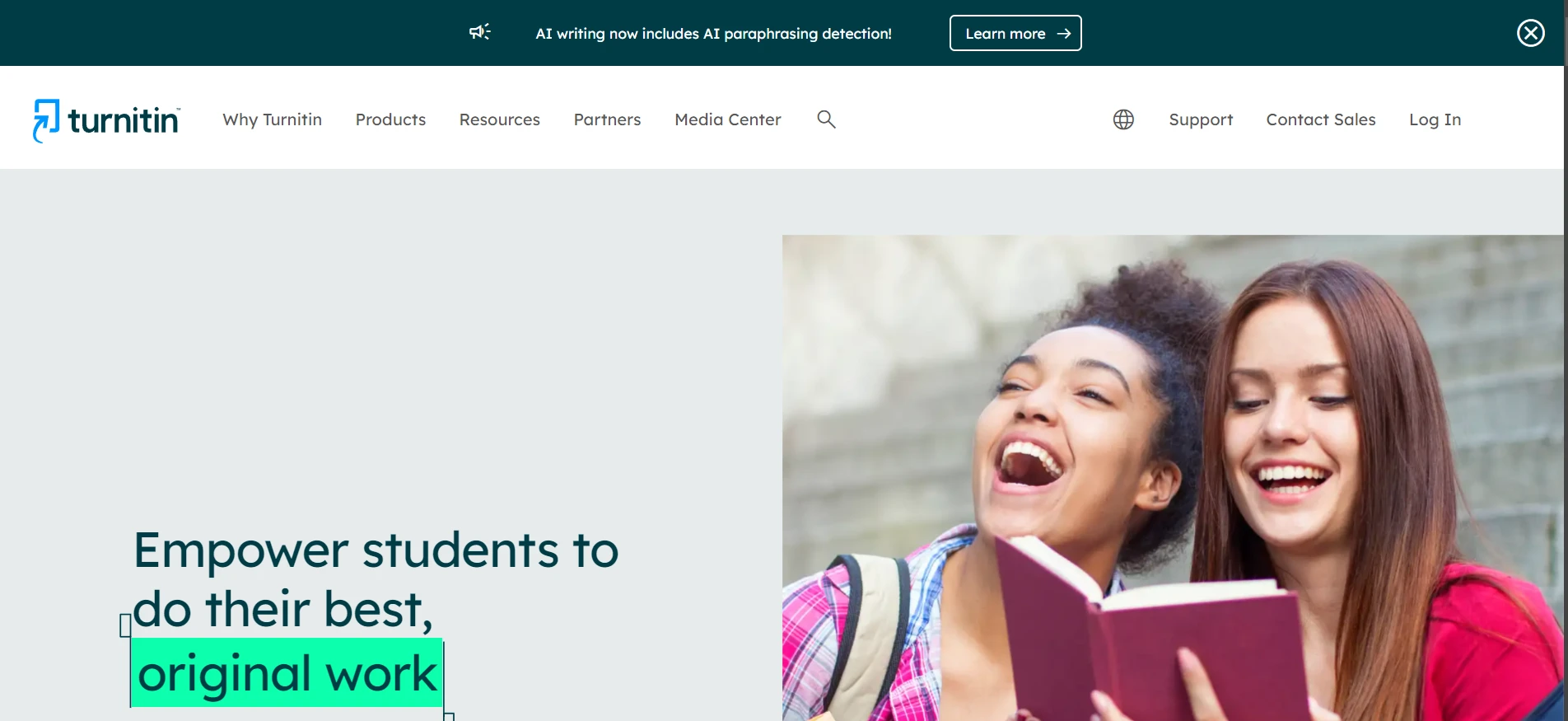As we all know, Turnitin has become synonymous with plagiarism detection (at least in the academic circles), but when it comes to catching AI-generated text, its game is kind of a different beast. A lot of folks believe they can easily tell apart AI from human-written content - teachers even claim around 77% confidence.
But the truth is, when you put it to the test, even experienced teachers only hit about 70% accuracy at best. That’s why, in my honest opinion, if you’re looking for a tool that mirrors Turnitin’s AI detection features, GPTZero is the closest one out there.
Why Turnitin’s AI Detection is a Different Beast?
Turnitin is mostly built for plagiarism, and while it does sport an AI detection feature, it isn’t really designed to bypass modern rewriting tricks or subtle linguistic nuances. LLMs (AI) tend to write in near-perfect English, using consistent grammatical patterns and low perplexity scores, which makes very strict detectors like Turnitin’s rely on detailed statistical analysis.
You might even notice that a lot of simple rephrasings that used to work just before the Dec 2023 update now can get flagged instantly. And let’s be honest - no matter how good a human’s instinct is, studies have shown pre-service teachers and even seasoned educators can miss or misidentify AI-written content more often than you’d expect.
So what do you do if you need a tool that’s almost like Turnitin in catching these nuances? That’s where GPTZero comes into play.
In all my testing and countless experiments, I’ve found that GPTZero is the closest tool to Turnitin when it comes to AI detection. If you can manage to get your text past GPTZero’s algorithms, chances are pretty high that it would also fly under Turnitin’s radar. GPTZero seems to mimic many of the detection patterns and subtle language cues that Turnitin looks for – it’s almost like its a mini Turnitin specifically for AI generated text.
Now, don’t get me wrong - GPTZero isn’t fool-proof, but in my personal experience, it stands head and shoulders above other tools out there. Its accuracy in identifying AI content is on par with what you’d expect from Turnitin’s own system. And just like with Turnitin, the key to success is not to rely solely on one method. I recommend a hybrid approach: run your document through a dedicated AI detection tool like GPTZero and then have an experienced human review any flagged sections. This two-pronged method can help address false positives or tweaks that might otherwise slip through.
Plagiarism Detection? Enter Quetext
If you’re talking about the plagiarism side of things – well, Turnitin’s plagiarism checker is state of the art. And in that arena, from my perspective, only Quetext even comes close. Wordtune, Quillbot and the like are great for rewrites and grammar tweaks, but if you want something that almost mimics Turnitin’s core plagiarism detection, Quetext is your best bet. It’s not a magic wand, but if you can get around GPTZero’s toughest detection systems, then passing Turnitin’s plagiarism check with Quetext-backed methods becomes a whole lot more likely.
Tips and Tricks for Bypassing AI Detectors
Now, before you start tinkering with your text, there a few little things you might want to keep in mind. Try and be mindful of using overused words that tend to get flagged by AI detectors - words like “firstly”, “moreover”, “furthermore”, “however” and “therefore”. They might make your writing appear too formulaic or robotic. Mixing up your sentence structures and occasionally throwing in some informal phrasing (without overdoing it) can sometimes work wonders.
Also, a heads up - don’t run your text through heavy grammar checkers like Grammarly after you’ve manually adjusted your style. They tend to “clean up” your designed inconsistencies and inadvertently make your writing too perfect for these detectors. It’s a bit ironic – if you’re trying to slip past a tool that detects perfect, machine-like precision, you really don’t want another tool to polish your text into oblivion.
The Hybrid Approach is the Key
Because no tool (GPTZero or Turnitin) is 100% reliable on its own, it’s always a cat and mouse game. My advice to anyone dealing with AI detection or plagiarism issues is simple: use a hybrid approach. Set clear guidelines for your work whether it’s for academic submissions, research abstracts or residency applications. Run your documents through dedicated scanners like GPTZero or Quetext, and then have an experienced reviewer double-check any flagged sections. This way, you’re not solely relying on algorithms that might miss context, subtle human nuances or even throw some false positives.
Frequently Asked Questions
Q1. Does GPTZero really mirror Turnitin’s detection?
A1. In my experience, yes. GPTZero picks up on many of the same patterns and subtle cues that Turnitin’s AI detector does. If you can bypass GPTZero, chances are you’re likely to get past Turnitin’s similar detection methods.
Q2. Is using GPTZero or Quetext a fool-proof way to bypass Turnitin?
A2. Not at all. Both tools are just proxies – useful and quite reliable most of the time, but ultimately, nothing is perfect. A combined human and tool-based review still remains the best approach.
Q3. Is ZeroGPT similar to Turnitin?
No, ZeroGPT's AI detector is not at all similar to Turnitin. The closest detector that I have come across to Turnitin is GPTZero.me.
Q4. What is the closest checker to Turnitin?
GPTZero.me's AI detector is the closest to Turnitin. It is not a one-to-one copy of Turnitin's AI detector but it is pretty darn close to it.
The Bottom Line
Turnitin remains a giant when it comes to plagiarism detection, but its AI detection feature isn’t flawless - just like human detection isn’t either. In my opinion, GPTZero comes the closest to Turnitin in catching AI-generated content. And when we talk about replicating Turnitin’s plagiarism detection prowess, nothing comes close to Quetext. Remember, though, that we’re all playing a cat and mouse game here. Relying on a hybrid approach that involves both automated tools and human judgment is the best way forward. Don’t get fooled by the idea of a single magic bullet - stay smart, keep your style unique, and always question what seems too perfect!


![[HOT TAKE] Is Winston AI or GPTZero more accurate?](/static/images/is-winston-ai-or-gptzero-more-accuratepng.webp)
![[NO NONSENSE ANSWER] Is Turndetect Permanently Down?](/static/images/is-turndetect-downpng.webp)

![[DIRECT ANSWER] Is iThenticate the same as Turnitin?](/static/images/is-ithenticate-the-same-as-turnitinpng.webp)





